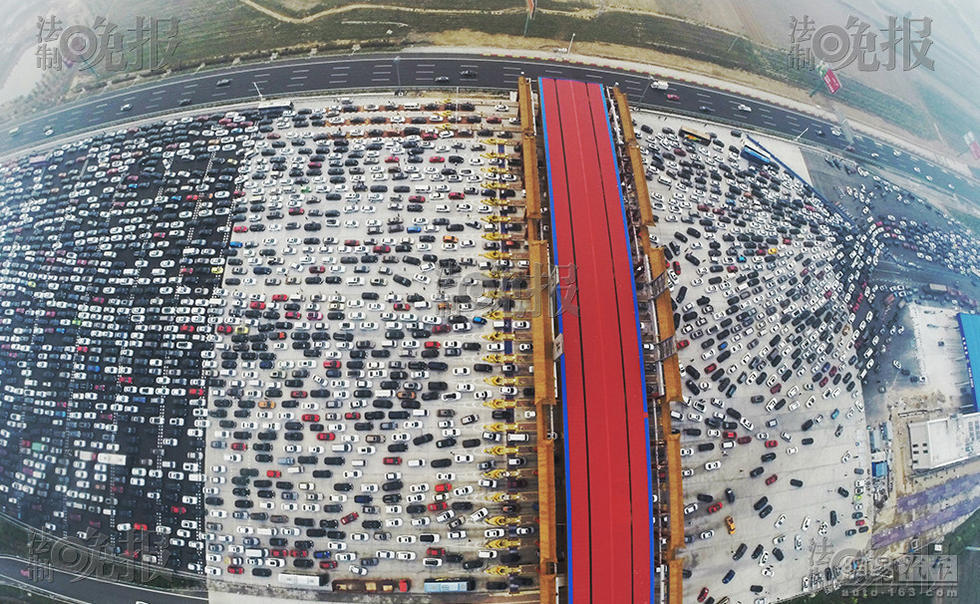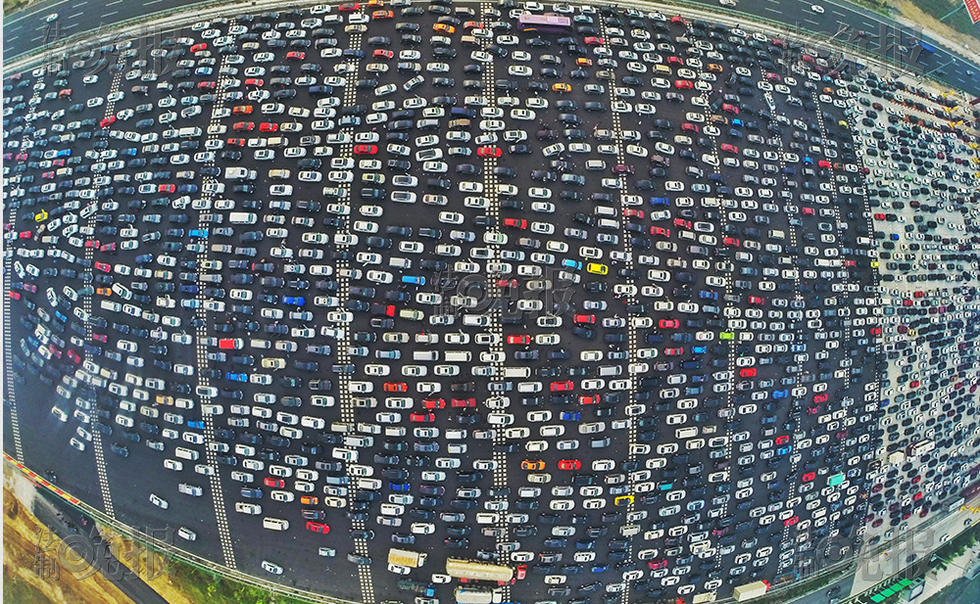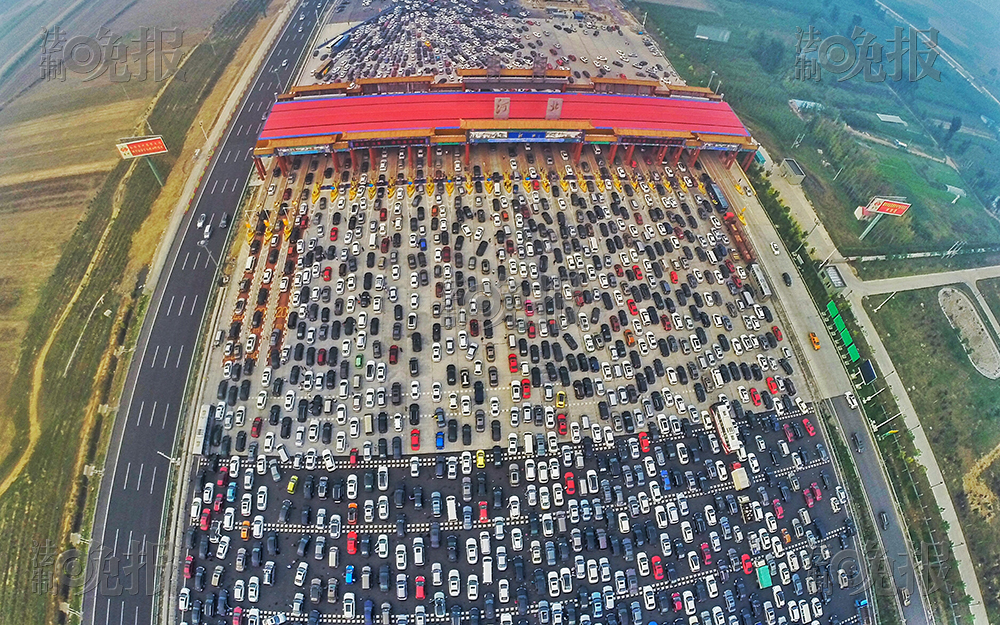Oct. 1-7 is a national holiday in China, a weeklong celebration of the PRC’s 1949 founding known as National Day. More than 750 million individuals — double the population of the United States — leave their homes during the so-called “Golden Week” for concerts, festivals, and fireworks displays, but when they decide to return, it results in unfathomable gridlock. According to People’s Daily Online, congestion began to form around a new checkpoint on the G4 Beijing-Hong Kong-Macau Expressway on Oct. 6.
Fifty lanes were whittled down to fewer than 20 around the toll, which left hundreds of thousands of travelers stranded in a desperate attempt to pass through. As you can see from video above (courtesy of Sploid), drivers got out of their cars, went for a walk, and engaged in some much-needed stretching while they waited. Nothing like a nightmarish pileup to cap off a relaxing vacation.
To make matters worse, there are no actual “lanes” leading up to the checkpoint at all, leaving drivers to fend for themselves in search of safe passage. Toll plazas are often unmarked like this, but the sheer number of vehicles in play makes efficient organization extremely difficult, so the relative order in which the drivers arranged themselves is commendable.
The massive traffic nightmare recalled memories of the now-legendary China National Highway 110 traffic jam of August 2010 for some. The jam kept thousands of vehicles at near standstill for more than 60 miles and lasted a whopping 10 days, causing many to abandon their cars altogether. The incident is also known for its creation of a “mini-economy,” which saw vendors sell goods like water, noodles, snacks, and cigarettes to the stranded at highly inflated prices.







